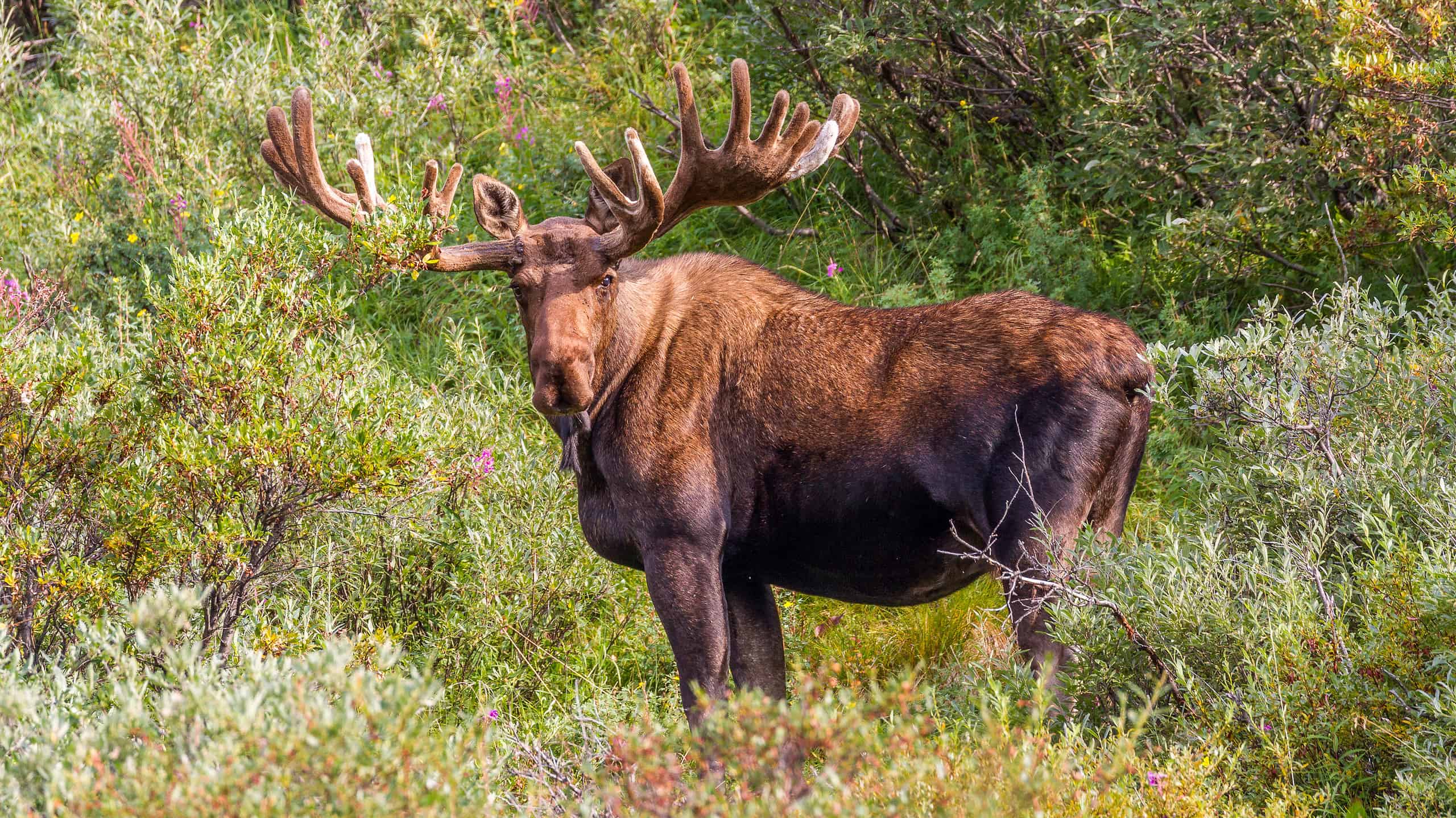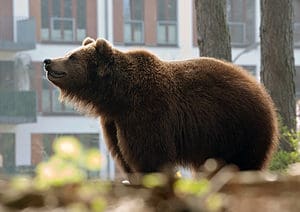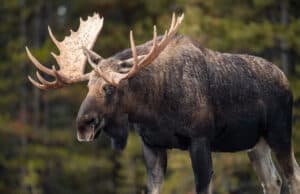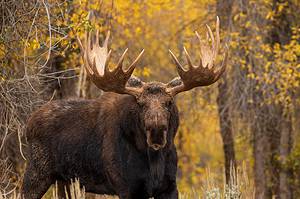When you’re enjoying a relaxing afternoon on the water, the last thing you expect is something to chase your boat.
Check Out the Chase
The clip below, shot in Alaska by Gabe Nyblad, shows a bull moose sprinting toward his boat
One ought to be able to tell how fast the animal is traveling just by listening to the sounds of the wind in the footage, the way the water is moving, and the sound of the boat engine. Moose may give the mistaken impression of being placid, slow-witted, and sluggish animals, while the contrary is actually true.
Thankfully for the animal and those enjoying the water, the moose eventually crosses the body of water. It walks its massive body onto the shore, into the tall grass, and away from the boaters.
How Fast Can Bull Moose Run?
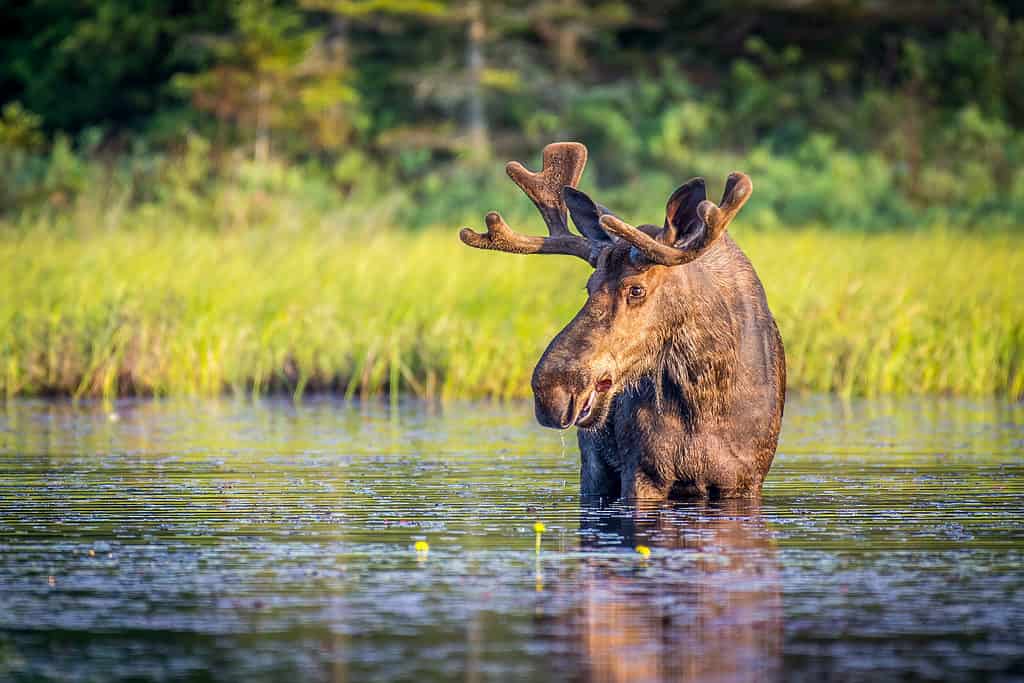
Moose will often head into the water when predators are near.
©Mark Byer/Shutterstock.com
Do you think you could outrun a moose? Over brief distances, Alaskan moose are capable of reaching speeds of 35 miles per hour. They typically can only maintain this pace for about 300 yards until they must stop and rest.
They may run at a slower pace of around 20 miles per hour for extended periods of time. Additionally, moose are skilled swimmers and have a one-minute breath-holding capacity.
While diving up to 20 feet deep their voluminous noses serve as valves to keep water from getting inside their body. They feed on plants below the surface that are inaccessible to other species when the weather turns colder.
How Large Do Moose Get?
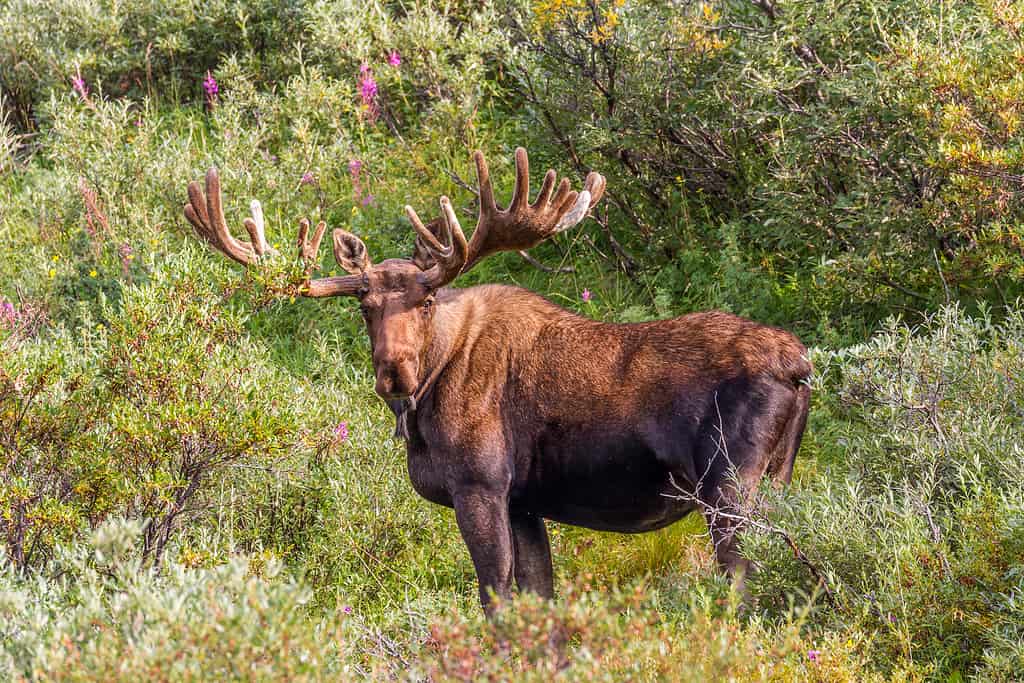
The Moose is the largest species of deer.
©JacobLoyacano/Shutterstock.com
Among the deer family, the moose holds the title of the largest member. Adult male moose, commonly known as bulls, exhibit an average shoulder height of 6 feet and can tip the scales at a maximum of 1,400 pounds. In contrast, the females, referred to as cows, are of smaller stature.
The most massive moose ever documented globally was an Alaskan moose weighing a staggering 1,808 pounds. This huge creature met its end in Yukon in September 1897 and stood at an impressive shoulder height of 7.6 feet, firmly earning its place as a record-setting giant.
Are Bull Moose Aggressive?

Usually, moose will flee suspected danger, however, during certain seasons they can become more aggressive.
©ArtBBNV/Shutterstock.com
Despite the fact that moose are often seen as less threatening than bears, greater numbers of individuals in Alaska are hurt by moose every year than by bears. When threatened, moose typically run away, but in some situations, they can turn hostile.
Moose are often not antagonistic animals. They get frightened and irritated when people constantly interact with them. Although every moose has a distinct tolerance threshold, many of them will become combative if they are repeatedly bothered.
Bull moose may be hostile to people during the rut, which occurs between late September and early October. Cow moose with newborn calves are extremely protective in the late spring and summer months and can attack anybody who approaches too closely.
When prepared to fight, this animal may lick its lips and raise up the long hairs on its back. When a moose approaches you cautiously, it may be searching for food or attempting to caution you to stay away. It isn’t attempting to be friendly. Each of these is a risky circumstance, so move away.
Is it Normal for a Moose to Chase a Boat?
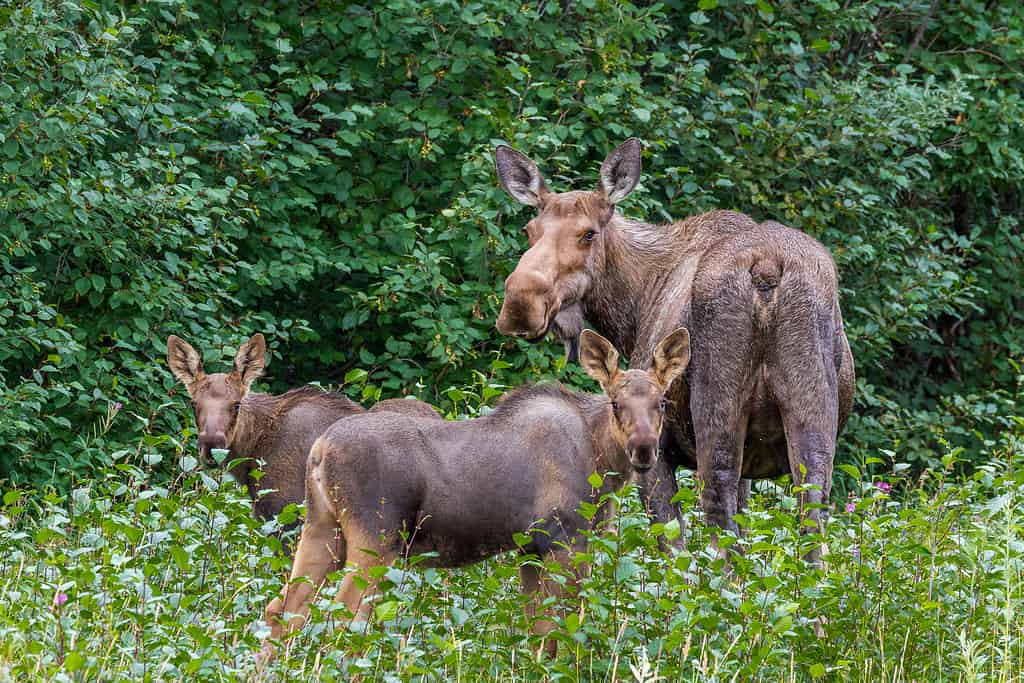
Moose may show aggression when they are being harassed by other animals or people.
©JacobLoyacano/Shutterstock.com
Moose are not normally aggressive but there are instances when they can exhibit aggressive behavior. Moose can become stressed and in particular, if there is a female moose protecting her young or a bull moose in the fall rut, they may be easily provoked and more likely to attack. Perhaps similar to humans, there are also many instances of them becoming more aggressive when they are in stressful situations. Most notably when they are being harassed by people or other animals and especially being bothered by traffic, they can show an increase in aggression. Moose do not like dogs and may show more aggression when a dog is in their vicinity.
While they do not show natural aggression, if they are provoked, the encounter can quickly become dangerous and deadly. It is always best to leave a moose alone and if you are near one, never approach it.
Where Would You Likely Encounter a Moose?
Moose can be found in various areas of North America and Canada, as well as parts of Europe and Asia. In the Western Hemisphere, you could come across a moose in the wilds of northern Canada, expanding west through the state of Alaska, and extending south through Colorado. Moose have sometimes been seen further south in Utah or Nebraska but that is not typical. Moose are also located in some New England States.
Alaska ranks the highest for moose population, which is not surprising given its northern climate. Surprisingly, perhaps, is that Maine ranks #2 for the most moose in the U.S. The numbers of moose by U.S. state are as follows:
- Alaska: 175,000
- Maine: 60,000
- Idaho: 10,000
- Colorado: 3,000
- Minnesota: 4,700
- New Hampshire: 3,300
- Utah: 2,500
- Washington: 5,000
- Wyoming: 3,500
- Vermont: 3,000
Thank you for reading! Have some feedback for us? Contact the AZ Animals editorial team.

